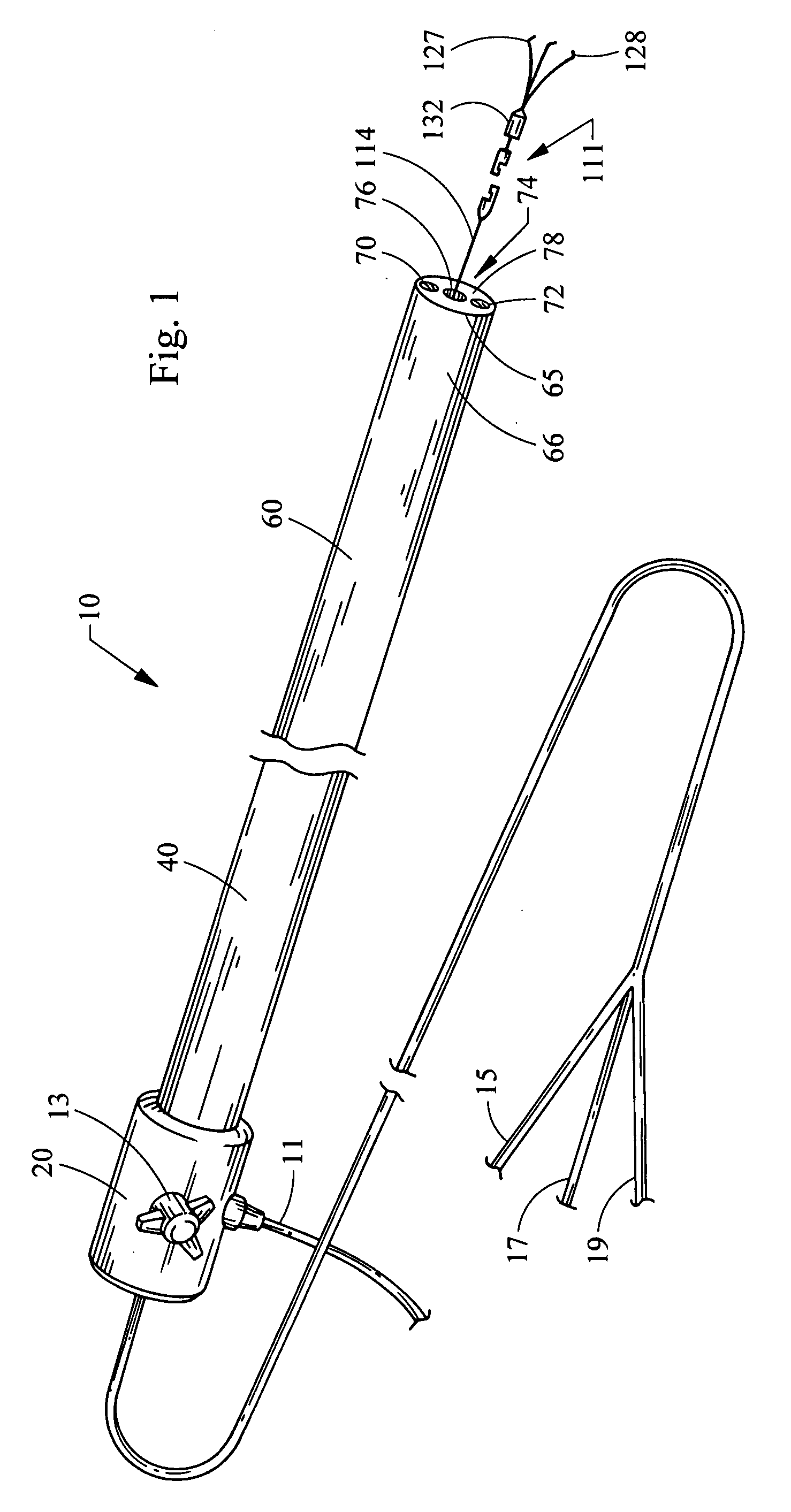Clip device and protective cap, and methods of using the protective cap and clip device with an endoscope for grasping tissue endoscopically
a technology of endoscopy and clip device, which is applied in the field of clip devices, can solve the problems of insufficient strength of conventional haemostatic devices to cause permanent hemostasis, inability to deliver via incision using rigid shafted instruments, and inability to continue bleeding for many patients, etc., and achieve the effect of improving healthcar
- Summary
- Abstract
- Description
- Claims
- Application Information
AI Technical Summary
Benefits of technology
Problems solved by technology
Method used
Image
Examples
Embodiment Construction
[0029] Although not limited in its scope or applicability, the present invention relates generally to devices and methods of grasping tissue endoscopically. More particularly, the invention relates to a clip and protective cap device, and methods of using a protective cap and a clip device with an endoscope, to grasp tissue endoscopically for performing hemostasis, tissue marking, endoscopic mucosal resection, tissue ligation, and a number of other applications related to colorectal medical procedures or gastrointestinal bleeding and the like.
[0030] For the purpose of promoting an understanding of the principles of the invention, the following provides a detailed description of embodiments of the invention as illustrated by the drawings as well as the language used herein to describe various aspects of the invention. The description is not intended to limit the invention in any manner, but rather serves to enable those skilled in the art to make and use the invention. As used herei...
PUM
 Login to View More
Login to View More Abstract
Description
Claims
Application Information
 Login to View More
Login to View More - R&D
- Intellectual Property
- Life Sciences
- Materials
- Tech Scout
- Unparalleled Data Quality
- Higher Quality Content
- 60% Fewer Hallucinations
Browse by: Latest US Patents, China's latest patents, Technical Efficacy Thesaurus, Application Domain, Technology Topic, Popular Technical Reports.
© 2025 PatSnap. All rights reserved.Legal|Privacy policy|Modern Slavery Act Transparency Statement|Sitemap|About US| Contact US: help@patsnap.com



